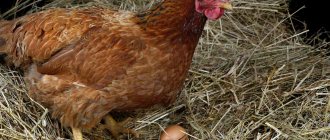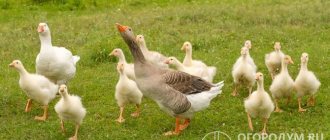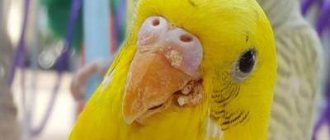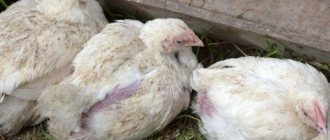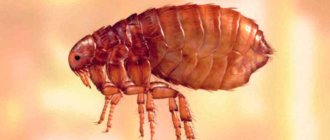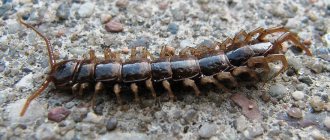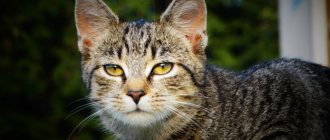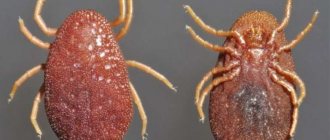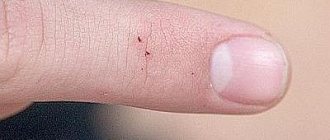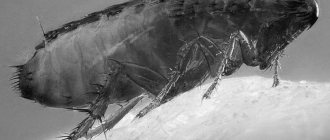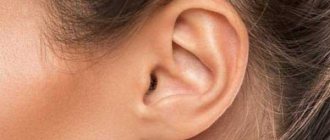Poisoning of chickens is a problem that beginners and experienced poultry farmers periodically face. The cause of this condition may be poor-quality food or a chemical accidentally eaten by animals. To preserve livestock, it is important to quickly find and eliminate the source of toxic substances, and then promptly begin providing first aid.
How chickens can be poisoned: symptoms and treatment of poultry.
Symptoms of poisoning in chickens
Poisoning can be acute, chronic, or transient. The speed of reactions depends on the amount of toxin that enters the body of the birds. In the initial stages, symptoms are almost invisible. The birds walk around with a ruffled look and refuse to eat. After 2-3 hours they begin to move less.
Common signs of chicken poisoning:
- anxiety;
- loss of appetite;
- diarrhea (blood may be present);
- thirst;
- vomit;
- convulsions.
If symptoms of poisoning are detected in chickens, treatment should be started immediately. If you delay, the likelihood of death of the entire livestock increases. With transient intoxication, the central nervous system is affected. The animal dies after 3-4 hours. The acute condition is accompanied by bloody diarrhea, vomiting, and severe thirst.
Poultry poisoning
Poultry poisoning - Poultry poisoning with poor quality feed is often observed. To prevent poisoning of birds, it is advisable to carefully inspect the purchased food using a magnifying glass: if dark spots are visible along the seam of the grain, most likely the food is contaminated with mold. Toxins of this fungus, which is dangerous for birds, may also be contained in other foods.
Spoiled wet mash can also cause severe poisoning in birds. Therefore, a few hours after feeding the birds with soft mixtures, uneaten food residues must be removed from the feeder.
Poisoning in birds is also caused by tobacco smoke and various household, perfume and, of course, insecticidal aerosols. Therefore, in the poultry house you cannot smoke, spray aerosols (insecticides, deodorants, antistatic agents, air fresheners, etc.), or carry out any work involving the use of varnishes, paints, solvents, etc.
Poisonous plants and their seeds can cause severe poisoning, often fatal, in birds.
Plants that are poisonous to birds include: - open lumbago; - common datura; - acrid buttercup; - Lobel's cherry; - greater celandine; - hemlock; - marsh spurge; - black root medicinal.
Poisoning can be transient, acute or chronic. Strong poisons kill the bird in a matter of hours, while weak ones act within several days. — General symptoms of poisoning: — anxiety; - convulsions; - diarrhea (sometimes with blood); - vomit; - thirst; - sudden death.
The first signs of poisoning in birds are almost invisible. Inexperienced poultry keepers usually do not attach much importance to them. However, it is easiest to cure a bird in the initial stages of poisoning. If the bird sits ruffled, refuses food and reacts poorly to external stimuli, then it needs to be observed for several hours. Usually, when poisoning occurs, birds begin to vomit and have diarrhea. Then the bird weakens and stops moving. With severe intoxication, fever, convulsions and paralysis of the limbs are observed.
If you suspect that the bird has been poisoned, it is advisable to consult a veterinarian. Before the specialist arrives, it is necessary to give the bird a mixture of activated carbon and tea soda, diluted with a weak solution of potassium permanganate.
The resulting mixture is thoroughly stirred, heated to a temperature of 36-37 ° C, shaken and given to the bird every 3 hours. The solution is dripped from a pipette or insulin syringe into the corner of the bird’s beak.
When the bird's condition improves somewhat, you can give it a decoction of flaxseed (2-3 drops).
Caustic alkali poisoning occurs after poorly carried out disinfection of the poultry house with slaked lime or caustic soda.
Symptoms: - swelling of the head and neck; - inflammation and swelling of the eyelids; - labored breathing.
In case of alkali poisoning, the bird must be given vinegar diluted in three times the amount of water and rinse the eyes with warm water.
Arsenic poisoning causes rapid death of birds. As an emergency measure, burnt magnesia is diluted in water (1 part magnesia to 20 parts water) and given to the bird every 15 minutes: ducks - 1 teaspoon, geese - 1 tablespoon of the solution. Mucous decoctions and egg whites also help.
Copper and zinc poisoning is caused by food that has been stored in zinc or copper containers for a long time.
The symptom is swelling and death of the fingers. In case of poisoning, the bird is given egg whites, mucous decoctions and milk.
Zinc phosphide is a very toxic drug used to control rodents.
Poisoning of birds with zinc phosphide can occur when they eat grain baits.
Symptoms: - depressed state; - labored breathing; - drooling; - impaired coordination of movements; - diarrhea mixed with blood; - convulsions; - paralysis of limbs.
Treatment of poisoning is possible only in the first few hours after birds eat rodent bait. In case of poisoning, birds are given Lugol's solution (1 teaspoon 2-3 times) or 1 teaspoon of 0.1% solution of potassium permanganate (one time).
Poisoning by nitrates and nitrites is possible when birds eat pesticides used in homestead farms as fertilizers, as well as feed containing high doses of nitrates (nitrites).
Symptoms: - strong excitement; - redness of the conjunctiva, mucous membrane of the beak and earrings; - shortness of breath; - drooling; - convulsions; - decrease in body temperature; - suffocation.
For poisoning with nitrates and nitrites, use lactic acid, which is diluted with water and given to the bird 2-3 times a day.
The first signs of table salt poisoning appear, as a rule, 1-2 hours after birds eat salty food.
Symptoms: - loss of appetite; - thirst; - depressed state; - rapid breathing; - diarrhea; - convulsions; - paresis and paralysis of the limbs.
To treat poisoning, use a 10% glucose solution.
Feed poisoning is possible if the rules for harvesting, storing and preparing herbs for feeding have not been followed.
This is due to the fact that if the technology is violated, nitrile glycosides, as well as hydrocyanic acid, accumulate in the feed. Signs of poisoning in most cases are similar.
Some poultry farmers are faced with beetroot poisoning, which occurs when birds are fed rotten root crops. Red beets are considered the most dangerous for them.
In the spring, birds may experience potato poisoning, which happens when corned beef accumulates in the tubers, so old, green and sprouted potatoes should not be given to birds. In case of poisoning by root vegetables, a sick bird is given decoctions of medicinal herbs and charcoal from burnt bones (3 g per head).
When poultry is poisoned by animal feed, fusariotoxicosis occurs - infection by a fungus of the Fusarium genus, during the life of which dangerous mycotoxins are produced. It is worth noting that feeding low-quality meat and fish feed leads to mass death of poultry. For medicinal purposes, birds are given castor oil in doses agreed with the veterinarian.
Products hazardous to birds
Birds are sociable creatures, so many owners are willing to allow them to join in on their meals.
You should know which of them can be deadly for birds.
Chocolate is dangerous for birds
1. Chocolate is a dessert treat for members of the entire human family, but it is harmful or fatal to your bird. Damage to the digestive tract occurs, manifested in the form of vomiting and stool disorders. As the poisoning progresses, the central nervous system is affected, the bird begins to have convulsions and death occurs.
Apple seeds contain dangerous cyanides
2. Apples, as well as other fruits such as cherries, peaches, apricots and pears, have small residual amounts of cyanide in the seeds. The fruit pulp is safe, but remove poisonous seeds from the table immediately. The skin of the fruit may also contain pesticides.
Alcohol is not suitable for poultry
3. Responsible bird owners will not allow their pet alcohol, even for fun. Wild birds, accidentally finding alcoholic beverages, received severe alcohol poisoning and died. Alcohol depresses all vital organ systems and is fatal for a small creature. Keep it away from the bird or vice versa.
Salt is white death for birds too
4. Sodium is vital for the functioning of cells and tissues, but an excess of it in the form of table salt is harmful. Thirst, dehydration, and in severe cases, renal dysfunction and death occur. Monitor the amount of salty food your bird consumes. Salted nuts and chips are definitely not food for your beloved parrot, no matter how persistently he begs for them.
Avocado is toxic to birds
5. The skin and seeds of this exotic fruit are known to cause heart problems in pets. Scientists continue to argue about the degree of toxicity of avocados, but you should adhere to the rule “better safe than sorry.” Keep guacomole and similar fruits away from the bird's voracious beak.
Fungi are dangerous for birds
6. Mushrooms can cause digestive disorders in pet birds. The caps and legs of some species can lead to liver failure. Do not give your bird mushrooms in any form: neither raw nor cooked. 7. Nightshades: tomatoes and potatoes themselves are tasty and healthy for birds. But the stems and leaves are poisonous and dangerous. If you are going to treat your pet to a delicious tomato treat, make sure that the treat is properly peeled and cut, with the green parts removed. Prevent unnecessary contact with toxins. Tomatoes contain a lot of acid, so avoid feeding them too much to your pet. Nature has created a lot of other less dangerous vegetables.
Don't give birds coffee
8. Drinks containing caffeine, such as soda, coffee and tea, have gained popularity among people, but it would be ill-advised to offer them to your bird. Caffeine leads to problems in cardiac activity: the pulse quickens, the heart rhythm is disturbed, and in severe cases it can stop. There is a better option: natural fruit or vegetable juices. The bird will be happy, and the quality of food will not be affected.
Onions and garlic are dangerous for birds
9. Seasonings such as onion and garlic are acceptable as additives in small quantities. Excessive consumption of them is fraught with vomiting, loose stools and other unpleasant and painful manifestations of digestive imbalance. With long-term use, birds developed a blood disease in the form of hemolytic anemia, accompanied by respiratory failure and possible death.
Legumes in dry and raw form are dangerous for birds
10. Cooked beans are a favorite of most birds, but if the bean is dry and raw, it is dangerous. These legumes contain a poison called hemagglutinin, which is a dangerous toxin for birds. Beans only need to be cooked, and dry beans should not be left in an easily accessible place.
Author: Chicken Ryaba
/ March 12, 2022 at 6:22 pm
Good afternoon, experienced and novice poultry farmers! Today we’ll talk about poisoning of laying hens, chickens and broilers. Causes of headaches for chicken breeders include poisoning of laying hens. This problem is caused by many factors. For example, spoiled feed, pesticides... Unfortunately, this often goes unnoticed by novice poultry farmers.
Hence the massive loss of chickens, the accumulation of chemicals in poultry products, pathologies of internal organs, at best, temporary digestive disorders and deterioration in productivity indicators. Therefore, today we will look at the causes of poisoning, their external manifestation (symptoms) and measures to combat a common problem.
What can poison chickens?
The main source of poisoning in 90% of cases is low-quality food of plant or animal origin. The birds eat it and begin to get sick. A rather rare occurrence is intoxication by seeds and plants. Celandine, horse chestnut, burdock, jaundice, hellebore, broom, belladonna, elderberry, and juniper are dangerous for poultry. If a chicken is poisoned, a veterinarian will tell you how to treat it.
What can poison chickens?
Birds do not tolerate contact with chemicals well. They get into the feed when storage conditions are violated or in unsanitary conditions. In poorly ventilated chicken coops, animals suffer from their own waste products: ammonia, carbon dioxide. The use of toxic paints and concentrated disinfectants has a bad effect on livestock.
Toxic factors or causes of the problem
The lion's share of poisonings is the result of the presence of low-quality and conditionally poisonous plant and animal feed in the feed supply. The list of the former consists of celandine, horse chestnut, burdock, jaundice, hellebore, broom, belladonna, elderberry, and juniper. Plant provoking factors also include vegetable tops affected by putrefactive processes.
Green potato tubers are dangerous. They contain corned beef - a compound from which any domestic animal suffers and even dies.
The cause of poisoning is sometimes gas pollution in the poultry house due to missing or faulty ventilation. Ammonia and carbon dioxide have a poisonous effect.
Feed becomes potentially dangerous after household chemicals, varnish, paint, and concentrated disinfectants get into it.
Let us consider separately the most common causes of the problem under consideration.
Mold
This factor provokes fusariotoxicosis. The root cause of the pathology is compounds that are secreted by fungi belonging to the genus Physarium. The main risk group is young animals.
Mold enters the chickens' bodies along with the feed. After two or three days, a mass mortality of chicks is observed. Adult chickens are stronger, so they begin to die no earlier than a week later.
Poisoning in a still living bird is accompanied by:
- Drowsiness;
- lethargy;
- poor or absent appetite.
Necrotic processes are visible on the mucous membranes.
The solution to the problem in this case is based on eliminating moldy feed from the diet, replacing bedding material, and disinfecting the floor and other structural elements of the poultry house that have been cleared of bedding. All equipment, especially those used for feeding, must be disinfected. The bird is recommended to be given a laxative (prescribed by a veterinarian). Chickens are given a 1% soda solution for two to three days. Meat products from dead chickens are not used as food or feed. The carcasses are disposed of, for example, buried or burned.
Sources of this mineral include fungicides, feed and pesticides. Excess copper in the body inhibits the growth and development of chickens, leading to dystrophy and anemia.
If chronic poisoning is diagnosed, feeding of feed containing copper is stopped. In case of acute poisoning, intravenous administration of 40% glucose is prescribed. The course of treatment is ten days.
Protein
Poor quality protein foods are another cause of poisoning. The more protein in the feed, the shorter its shelf life. Therefore, feeding stale fish or meat and bone meal to poultry is fraught with intoxication, manifested by lack of appetite, bloody diarrhea, and in severe cases, impaired coordination. With such a problem, the first thing to do is to stop feeding the birds animal food. A weak solution of potassium permanganate is also prescribed.
Poisoning chickens with rat poison
Now about poisons used in the fight against rodents, for example, rat death. It is difficult to find a poultry farmer who is not periodically puzzled by the fight against mice and rats - living creatures that destroy food supplies and even eat chickens. The most reliable way to exterminate rodents is to place poisons containing zoocides in places where they appear.
The latter in the body of chickens stops the formation of vitamin K1. Therefore, the blood stops clotting, and the vessels become more permeable. The result is internal bleeding.
A bird with such intoxication can be identified by:
- Bluish earrings and comb;
- hypothermia;
- leakage of saliva;
- dilated pupils;
- general weakness;
- diarrhea.
Problem chickens do not leave the waterers and quickly lose weight.
The solution to the problem involves the administration of vitamin K1, called Phytomenadione or Konakion in pharmacies. For every kilogram of bird weight, no more than 5 mg of the drug is administered daily.
For vomiting, subcutaneous administration of the medication is recommended. A common mistake is giving vikasol, a vitamin that is not a phylloquinone substitute, that is, such a drug simply does not work.
How to properly use rat poison in the chicken coop and on the property, see this article.
Nutritional poisoning
The unpleasant prospects awaiting a poultry breeder after the poisoning of his wards with feed include a deterioration in all productivity indicators and organoleptic criteria for the quality of meat products. There are frequent cases of mass death of chickens.
Spoiled feed is the result of an erroneous approach to its storage. For example, some novice poultry farmers store roughage, concentrated and other feeds in the same room with poisonous vegetation, chemicals and other toxic substances. Sometimes owners make hay without first assessing the grass stand. Because of this, roughage or hay meal may contain poisonous herbs, which naturally end up in the diet of birds.
Poisoning chickens with salt
The problem in question often makes itself felt when poultry farmers forget to exclude table salt from the diet after introducing salty ingredients into it, for example, salted fish. Chickens begin to die with a daily dose of salt equal to 4.5 g per kilo of weight. By the way, laying hens can be fed 0.6-0.7 g of table salt daily.
Excessive doses of such feeding, if they do not lead to waste, then at least worsen the condition and functioning of the cardiovascular system, bones and joints. Let's return to salted fish. The diagnosis of chicken salt poisoning is confirmed by:
- Constant thirst;
- lack of appetite;
- liquid droppings;
- convulsions;
- impaired coordination;
- rapid breathing.
How to help birds poisoned by salt? Firstly, you need to exclude table salt from your diet. Secondly, the chickens are provided with clean water. Sometimes the bird refuses liquid. In such situations, the solution is forced watering using a probe. Thirdly, 10 percent glucose is recommended. Fourthly, drinking a decoction of flaxseed will help. Feed birds with this product for three days.
Poisoning chickens with rotten beets
Chickens can be poisoned by beets that show signs of rot. Cooking this inhabitant of the beds leads to the formation of nitrites in it, which, by the way, are dangerous for us. Red (table) beets are recognized as the most dangerous. It is important to ensure that putrefactive processes do not affect the tops intended for use as feed.
Experienced poultry farmers cook root vegetables so that the duration of heat treatment does not exceed four to five hours. Ready root vegetables are immediately washed and cooled. Methylene blue helps poisoned chickens. It is administered once into a vein in the amount of 0.01 g per kilo of weight.
Potato
As already noted, the tubers of such a culture contain a large amount of a glycoalkaloid called solanine. The greener the tubers, the more potential poison they contain.
Sprouted potatoes are also dangerous. Birds poisoned with solanine stop responding to external stimuli and sit with a ruffled appearance. This picture is complemented by convulsions, and in severe cases, paralysis.
Help strategy for solanine poisoning:
- Rinsing the crop with a 0.1 percent solution of potassium permanganate, followed by contacting a veterinarian;
- giving flaxseed solution. This product is prepared very simply: hot water + flax seeds.
The ratio of ingredients is 3 to 0.1. The whole thing is infused for half an hour. Further treatment is prescribed by a veterinarian.
Read about poisonous plants in this article.
Poisoning chickens with mold
Mold is very dangerous for birds. Birds develop fusariotoxicosis. This is a disease caused by fungi of the genus Physarium. This disease is especially dangerous for young birds. Intoxication occurs due to the consumption of animal or plant feed contaminated with mold. Young birds die after 2-3 days, and adults die after 7-10 days.
Symptoms of chicken disease:
- drowsiness;
- lethargy;
- lack of appetite;
- necrosis of mucous membranes.
If mold is suspected, you should stop feeding the affected food. The bedding in the chicken coop should be replaced after disinfecting the room. The animals are given a laxative prescribed by the veterinarian. To normalize the condition of the birds, they are soldered with a 1% soda solution for 2-3 days. The carcasses of dead birds cannot be used for food or to feed other animals. They should be disposed of.
Protein poisoning in chickens
Sources of infection can be low-quality fish or meat and bone meal, spoiled or stale meat. The animals have no appetite and bloody diarrhea occurs. With severe intoxication, coordination disorders are observed. For treatment, you need to completely exclude animal food and give the birds a solution of potassium permanganate.
Symptoms of poisoning and treatment of poultry.
Meat and fish poisoning
To be honest, many of the geese keepers feed them table scraps. If meat and fish waste has already deteriorated, the geese may be poisoned. If left untreated, this disease can be fatal. Suitable treatments: castor oil and vodka.
If you like my channel, you can easily support it by subscribing, liking, commenting, and also reading my other articles. For you this is nothing, but for me it is an incentive to move forward.
Poisoning chickens with rat poison
This chemical is dangerous for both people and birds. Birds in search of food may eat bait containing zoocides. When rat poison enters the body, it inhibits the synthesis of vitamin K1. The animal's blood clotting is impaired and vascular permeability increases. This leads to internal bleeding. Signs of intoxication:
- blueness of earrings, comb;
- decrease in body temperature;
- salivation;
- dilated pupils;
- strong thirst;
- weakness;
- diarrhea;
- weight loss.
A specific antidote for rat poison is vitamin K1. It is produced under different names: Phytomenadione, Konakion, Kanaviti, etc. The recommended dosage of the drug is up to 5 mg/kg per day. If birds vomit, you can administer the medicine subcutaneously. Some owners give birds Vikasol (K3), which is absolutely not allowed if the chicken is poisoned. This vitamin is not a substitute for phylloquinone, and it is useless if the body is intoxicated with rat poison.
Chemical poisoning
Toxic chemicals can reach birds in a variety of ways. Sometimes they get in with the feed; in unsanitary conditions, many toxic substances can form in the poultry house as a result of the vital activity of birds (ammonia, carbon dioxide, hydrogen sulfide).
It is also possible that particularly curious chickens may find some toxic substances on the site. Intoxication often occurs as a result of improper use of medicines, disinfectants, and paints and varnishes. Next, we will consider the most common types of toxic chemical agents.
Caustic alkali
Caustic alkali is a water-soluble alkali metal hydroxide. Most often, poisoning with it occurs as a result of insufficient ventilation of the poultry house after treatment with slaked lime or caustic soda (caustic soda).
Signs of intoxication:
- difficulty breathing, shortness of breath, suffocation;
- swelling of the eyelids, head, neck;
- inflammation of the conjunctiva;
- salivation;
- convulsions;
- redness of the beak and earrings;
- decrease in body temperature.
Arsenic
Arsenic poisoning most often occurs due to careless storage of pesticides or accidental consumption of rodent baits. Depending on the amount of the substance eaten, there may be acute or chronic poisoning (with frequent intake of small doses).
Clinical picture of acute intoxication:
- cyanosis of scallops, catkins;
- decreased body temperature;
- weakness;
- thirst;
- drooling, difficulty swallowing;
- pain on palpation of the goiter;
- dilated pupils;
- coma.
In case of chronic poisoning, the manifestations are as follows:
- diarrhea (watery stool, white, sometimes with blood);
- exhaustion and weight loss.
An effective remedy against arsenic poisoning is Unithiol. This substance acts as a specific antidote to arsenic. For veterinary purposes, Unithiol is available in powder form.
For oral administration, a 10% solution is prepared for chickens: 1 part of the powder is diluted with 9 parts of water, the course of treatment lasts 8-10 days. In the absence of this drug, you can use a solution of potassium permanganate (1:20). Give orally every 15 minutes for 1-2 days.
Copper and zinc
Zinc poisoning occurs as a result of exceeding the dosage of the element in feed additives, as well as during long-term storage of feed in galvanized containers. Zinc negatively affects the mucous membrane of the digestive organs, disrupts redox processes, and accumulates in internal organs, which inevitably leads to disruptions in their functioning.
In case of chronic intoxication, the following symptoms are observed:
- growth slowdown;
- anemia;
- exhaustion;
- lack of appetite and thirst;
- muscle weakness;
- depressed state.
To recover from the diet, you need to exclude any food containing zinc and add mixtures with copper and iron.
Copper poisoning occurs due to exceeding the dosage of the microelement in supplements, when copper salts are accidentally ingested as a result of careless storage. Copper is found in many pesticides and fungicides. With copper intoxication, exhaustion, dystrophy and stunting (in young animals), and anemia are observed.
In case of chronic poisoning, it is necessary to exclude food containing this element. In the acute form, a 40% glucose solution (0.5 ml/kg of live weight) or Unithiol (4 mg/kg of live weight) can be administered intravenously for 10 days.
Poisoning chickens with table salt
This problem often occurs when feeding birds salted fish. For chickens, the lethal dose of table salt is 4.5 g/kg. Symptoms occur in the first 2-4 hours after consuming the product.
Signs of table salt intoxication:
- increased thirst:
- lack of appetite;
- loose stools;
- loss of coordination, convulsions;
- rapid breathing.
Not every experienced livestock breeder knows what to do if chickens are poisoned by salt. To normalize the condition, it is important to provide animals with access to clean drinking water. If the birds do not want to drink liquid, it must be given forcibly through a tube. Birds can be soldered with a 10% glucose solution. A decoction of flaxseed is also useful for salt intoxication. It is given instead of water for 3 days.
How to poison chickens
Poultry poisoning occurs when feeding low-quality feed or containing toxic substances.
Protein poisoning occurs when there is an excess of protein in the diet. Their consequences are disturbances in general metabolism and growth inhibition. Fat poisoning can be caused by feed containing non-saponifiable fat fractions. Usually they affect young birds (adult birds are more resistant) at the age of 2-6 weeks. In this case, shortness of breath, impaired coordination of movements, and general depression are observed. Such a bird has ruffled feathers, and is sluggish and inactive.
Of the plant materials that are poisonous to poultry, ergot, cockle, smut, etc. Poisoning can also be caused by highly salted feed (fish, meat products, sauerkraut, pickles, etc.).
Poisoning by toxins from mold fungi (aflatoxicosis) is especially dangerous, so grain, grass meal, mixed feed, cakes, and bran that have been stored for a long time, especially with high humidity, should not be fed to chickens.
Poultry poisoning can also be caused by chemicals used in the processing of grain, premises, various medications and disinfectants used incorrectly and in high doses, as well as heavy metals (lead, mercury, etc.) found in the feed.
Signs of poultry poisoning (general): extreme thirst, diarrhea, convulsions, paralysis, lethargy, inactivity, drooping wings, ruffled feathers, clouding of the cornea, general depression. The main thing in the prevention of various poisonings is the exclusion from the diet of poor quality and poisonous feed.
Poisoning of animal feed by poisons.
Possibly when feeding rotting meat and fish. Signs of poisoning: diarrhea, sometimes with blood, depression, drooping wings, ruffled plumage. An autopsy reveals hemorrhage in the internal organs, degeneration of the liver and heart muscles.
For treatment, a 0.1% aqueous solution of potassium permanganate is used instead of water. A decoction of flaxseed is given internally.
Potassium nitrate poisoning of poultry.
The active principle of this mineral plant food is nitric acid compounds. Clinical signs of poisoning manifest themselves in the bird's anxiety, which is replaced by depression. The comb and earrings turn blue, breathing becomes faster and more difficult. A disorder of the digestive tract appears, and paralysis of the legs is possible. Death occurs from suffocation.
At autopsy, such chickens are found to have pinpoint hemorrhages and inflammation of the mucous membrane of the crop, stomach and intestines.
Before treatment, it is necessary to establish the cause and isolate the source of potassium nitrate. For medicinal purposes, feed the bird a solution of potassium permanganate at a rate of 6 g per 10 liters of water for 6-8 hours.
Table salt poisoning
. The cause of poisoning may be feeding the bird salted fish or an increased dose of salt in the diet (3 g or more per head).
Signs of poisoning include thirst, loss of coordination, convulsions, and frequent excretion. Death occurs from suffocation. An autopsy reveals many pinpoint hemorrhages in the heart, stomach, and intestines. The lungs are filled with blood and swollen.
Treatment consists of drinking plenty of fluids and administering enveloping agents inside.
Poisoning with plant poisons
. Poisoning with plant poisons or their chemical compounds often occurs. Birds can become poisoned when fed cakes containing mustard, rapeseed, and rapeseed.
Lifetime signs of such poisoning are depression, loss of coordination of movements, unsteadiness, shortness of breath, blue discoloration of the comb and earrings. At autopsy, blue mucous membranes of the mouth, pinpoint hemorrhages in the digestive tract, and pulmonary edema are observed.
At the first signs of poisoning, immediately stop feeding the poisonous food. A 2% solution of bicarbonate of soda, a decoction of flaxseed, and castor oil are given orally (1.5 liters per 1000 chickens or per 250-500 chickens per meal with food).
Poisoning from cottonseed meal.
The toxic substance in cotton is gossypol. Effective when fed in high doses or with long-term use of cake.
Clinical signs of poisoning: depression, liquid stool. At autopsy, degeneration of the liver, heart muscles, and hemorrhage can be observed.
During treatment, cottonseed cake is excluded from the diet. Drink mucous decoctions. Feed fresh greens and carrots.
To reduce toxicity, the cakes are heated with dry heat for two hours at a temperature of 70-75 °C.
Poisoning from moldy feed.
Signs of poisoning: increased salivation, vomiting, diarrhea, weakness. Paralysis is possible. Many hemorrhages are found in the kidneys, the liver is degenerated.
During treatment, stop feeding moldy food, introduce saline laxatives and tetracycline antibiotics. Drink a solution of potassium permanganate during the first half of the day (6 g per 10 liters of water).
Please comment on the material published on this page and share your experience. Your opinion is important to us!
© 2014. All rights reserved. Publication of site materials is permitted provided there is a link to Rural Life
Poisoning of chickens with beets
Digestive and vital function disorders occur if you feed rotting or cooked root vegetables to a chicken. When it is heat treated, nitrites are formed, which are dangerous to the health of birds. These substances are present in large quantities in red beet varieties. Spoiled tops are also harmful to birds.
Poultry can be given boiled root vegetables, but the heat treatment time should not exceed 3-6 hours. After cooking is complete, the vegetable should be washed and cooled quickly. Tops and raw beets for feeding should be fresh and clean. In case of severe damage to the body, an aqueous solution of methylene blue is administered intravenously once. Recommended dosage is 0.01 g/kg.
What is poisoning
Poisoning is a complex disorder of the body’s functioning as a result of the ingestion of a toxic substance. During the process of intoxication, the functioning of many systems and organs is disrupted.
Poisoning may have the following effects depending on the type of poison and quantity:
- Hyperacute intoxication. With this type, the central nervous system is affected, acute loss of coordination and convulsions occur. Death of the bird occurs within a few hours.
- Acute intoxication. The body is exposed to intoxicants once or briefly. In the acute form, the clinical picture is very pronounced. Acute poisoning occurs as a result of a large amount of potent substances.
- Chronic intoxication. In this form, the body is regularly exposed to intoxicants (in small quantities or weakly active) for a long time. The clinical picture may be pronounced or absent.
Toxic agents can be:
- low-quality, contaminated, expired, spoiled feed;
- poisonous plants and seeds;
- pesticide;
- acids and alkalis;
- mushrooms.
Intoxication is accompanied by the following clinical picture:
- weakness, apathy, lethargy and depression;
- increased anxiety and excitability;
- convulsions, paralysis, limited movement;
- lack of response to external stimuli;
- lack of appetite;
- vomit;
- changes in bowel movements (diarrhea, sometimes with bloody impurities, change in the color of stool to green or yellow);
- increased thirst;
- rampant mortality.
Depending on the type and dose of the toxic agent, symptoms may vary. Due to inexperience and ignorance, the poultry farmer may not pay attention to the strange behavior and atypical state of the bird, which signals the first stage of poisoning.
It is at this stage that intoxication can be eliminated easier, faster and with less damage to the health of the chicken. Usually, after the onset of the toxic agent, the bird tries to retire, hides in a corner, crests, refuses to eat and stops responding to stimuli.
Next, indigestion sets in, and the bird gradually weakens. In severe cases, motor activity is impaired in the form of convulsions and paralysis.
In any case, if an alarming clinical picture is detected, it is necessary to analyze the diet and living conditions in order to calculate the cause of the poisoning. If possible, always contact an experienced veterinarian.
Potato poisoning of chickens
The tubers of the plant are distinguished by a high concentration of the glycoalkaloid solanine. It is found in large quantities in green, sprouted and simply spoiled potatoes. When the body is damaged by glycoalkaloids, birds do not react to irritants. The hens are cresting. Animals experience convulsions, and in particularly advanced cases, paralysis.
Symptoms of poisoning in chicken.
In case of potato poisoning, the bird's crop is washed with a 0.1% solution of potassium permanganate. It is advisable to show her to the veterinarian immediately. After washing the crop, the birds should be given flaxseed solution. To prepare it, seeds are poured with hot water for 30 minutes in a ratio of 1:30. The doctor should draw up a further treatment plan.
Probiotic "Symbitox"
The complex drug is developed for the prevention and treatment of poisoning in animals. "Symbitox" quickly destroys mycological toxins, binds and removes them from the body. Effective treatment of chicken poisoning is provided by natural interferon inducers, sepiolite, bentonite, silicon dioxide, calcium carbonate. These substances help the body resist disease, absorb toxins and breakdown products, and normalize the functioning of the gastrointestinal tract. Advantages of the probiotic "Simbitox" for the treatment of chickens:
- produced in convenient powder form;
- does not cause side effects when neutralizing toxins;
- safe for birds;
- stored for 1 year.
The probiotic can be used to prevent poisoning in animals. The drug is active against pathogenic microorganisms when adding 2 kg per 1 ton of feed. The recommended dosage to eliminate signs of intoxication is 3 kg/1 ton. The drug begins to act immediately after entering the digestive tract. It can be given to chickens, cattle, and pigs.
How to poison chickens
Poultry poisoning occurs when feeding low-quality feed or containing toxic substances. Protein poisoning occurs when there is an excess of protein in the diet. Their consequences are disturbances in general metabolism and growth inhibition.
Fat poisoning can be caused by feed containing non-saponifiable fat fractions. Usually they affect young birds (adult birds are more resistant) at the age of 2-6 weeks. In this case, shortness of breath, impaired coordination of movements, and general depression are observed. Such a bird has ruffled feathers, and is sluggish and inactive.
Of the plant materials that are poisonous to poultry, ergot, cockle, smut, etc. Poisoning can also be caused by highly salted feed (fish, meat products, sauerkraut, pickles, etc.).
Poisoning by toxins from mold fungi (aflatoxicosis) is especially dangerous, so grain, grass meal, mixed feed, cakes, and bran that have been stored for a long time, especially with high humidity, should not be fed to chickens.
Poultry poisoning can also be caused by chemicals used in the processing of grain, premises, various medications and disinfectants used incorrectly and in high doses, as well as heavy metals (lead, mercury, etc.) found in the feed.
Signs of poultry poisoning (general): extreme thirst, diarrhea, convulsions, paralysis, lethargy, inactivity, drooping wings, ruffled feathers, clouding of the cornea, general depression. The main thing in the prevention of various poisonings is the exclusion from the diet of poor quality and poisonous feed.
Poisoning of animal feed by poisons.
Possibly when feeding rotting meat and fish. Signs of poisoning: diarrhea, sometimes with blood, depression, drooping wings, ruffled plumage. An autopsy reveals hemorrhage in the internal organs, degeneration of the liver and heart muscles.
For treatment, a 0.1% aqueous solution of potassium permanganate is used instead of water. A decoction of flaxseed is given internally.
Potassium nitrate poisoning of poultry.
The active principle of this mineral plant food is nitric acid compounds. Clinical signs of poisoning manifest themselves in the bird's anxiety, which is replaced by depression. The comb and earrings turn blue, breathing becomes faster and more difficult. A disorder of the digestive tract appears, and paralysis of the legs is possible. Death occurs from suffocation.
